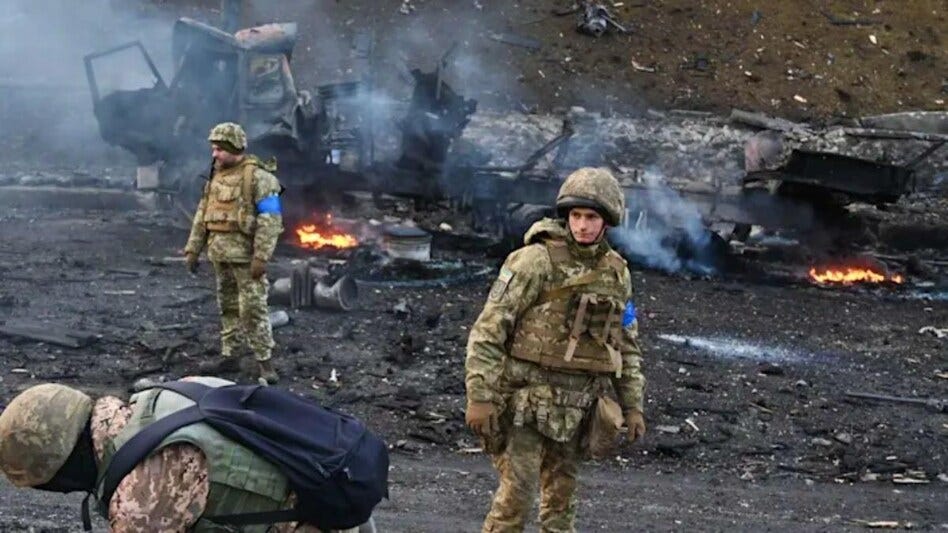The Russia-Ukraine conflict is a devastating war raging across Europe, a culmination of centuries of intertwined history. Understanding its complexities requires delving into the historical, political, and cultural tapestry that has shaped their relationship. This article examines the shared and contested past, the impact of the post-Soviet landscape, and the seeds of conflict that led to the 2022 invasion. We will explore the war’s global implications, including the humanitarian crisis, geopolitical shifts, and economic consequences, providing a comprehensive overview of the conflict’s unfolding future.
The Post-Soviet Landscape
The collapse of the Soviet Union in 1991 was a watershed moment. Ukraine declared its independence, overwhelmingly affirmed in a national referendum. However, the legacy of Soviet influence and a significant Russian-speaking population in eastern and southern Ukraine created a complex political landscape.
The post-Soviet years saw Ukraine navigate a precarious path between Russia and the West. Seeking closer ties with the European Union and NATO, Ukraine remained economically dependent on Russia, particularly for energy supplies. This dependence, coupled with internal political divisions, made Ukraine vulnerable to Russian pressure.
The Seeds of Conflict: 2014 and Beyond
The seeds of the current conflict were sown in 2014, following the Euromaidan protests that ousted the pro-Russian President Viktor Yanukovych. Russia, viewing the protests as a Western-backed coup, responded by annexing Crimea, a peninsula with a majority Russian population and a strategically important naval base.
Simultaneously, Russia supported separatist movements in the Donbas region of eastern Ukraine, fueling an armed conflict that simmered for eight years. The Minsk agreements, aimed at achieving a ceasefire and political settlement, failed to resolve the underlying tensions.
The 2022 Invasion: A Turning Point
In February 2022, Russia launched a full-scale invasion of Ukraine, marking a dramatic escalation of the conflict. The invasion, justified by Russia as a “special military operation” to “denazify” and “demilitarize” Ukraine, was widely condemned by the international community as an unprovoked act of aggression.
The invasion triggered fierce Ukrainian resistance, supported by military aid from Western nations. The war has been marked by brutal fighting, widespread destruction, and a massive humanitarian crisis, with millions of Ukrainians displaced from their homes.
The War’s Impact and Global Implications
The Russia-Ukraine war has had profound global implications, reshaping the geopolitical landscape and challenging the existing international order.
- Humanitarian Crisis: The war has created a massive humanitarian crisis, with millions of refugees fleeing Ukraine and widespread reports of war crimes.
- Geopolitical Shift: The war has exacerbated tensions between Russia and the West, leading to a new era of geopolitical competition. NATO has been revitalized, and European countries have increased their defense spending.
- Economic Consequences: The war has disrupted global supply chains, particularly for energy and food, leading to inflation and economic instability.
- Information Warfare: The conflict has been characterized by intense information warfare, with both sides engaging in propaganda and disinformation campaigns.
- Nuclear Concerns: The war has raised concerns about the potential use of nuclear weapons, particularly given Russia’s nuclear arsenal.
The Unfolding Future
The future of the Russia-Ukraine conflict remains uncertain. While Ukraine has demonstrated remarkable resilience, Russia continues to pursue its military objectives. Diplomatic efforts to achieve a ceasefire and political settlement have yielded limited results.
The war has highlighted the fragility of peace in Europe and the enduring challenges of addressing historical grievances and geopolitical rivalries. It serves as a stark reminder of the devastating consequences of armed conflict and the importance of upholding international law and promoting peaceful resolution of disputes.
The conflict has also shown the interconnectedness of the world, and how a regional conflict can have global ramifications. The world watches, hoping for a resolution that will restore peace and stability to the region, and prevent further human suffering.
The long term effects of this war will reshape the world for generations. The rebuilding of Ukraine, the re-establishment of global supply chains, and the new security architecture of Europe are all enormous challenges that will need to be addressed in the coming years. The very concept of European security has been fundamentally altered. The world has been shown the true cost of unchecked aggression, and the importance of standing in defense of international law and the sovereignty of nations.
